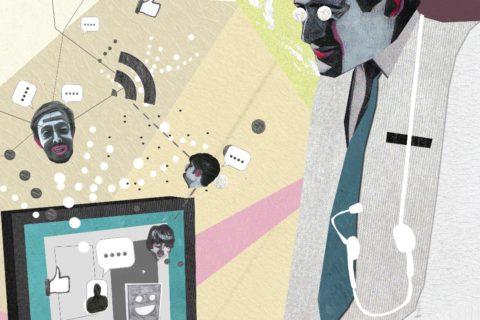James Rohde
Virtual Research is no longer a hot topic in the world of market research, it is simply a reality. What has been more of a conversation is how the virtual medium is used and what it means vs. the more traditional mediums that researchers are used to using.
Interestingly, market researchers are not the only ones that are having this particular conversation; psychologists have been trying to decode the realities of virtual research, both current and future.
The Goals of Virtual Research
For the purposes of psychologists, virtual mediums are leveraged as a safe way for patients to interact in scenarios that could be threatening, either emotionally or physically (e.g. meeting friends at a bar for the alcoholic or riding in an elevator for the claustrophobic). Some of the more interesting points of success within virtual psychological practice are explored in the March issue of Monitor on Psychology by Tori DeAngelis in her article “A second life for practice?”
While two different forms of virtual health technology are discussed, three-dimensional immersion and avatar “second life”, both attempt to provide clients with realistic scenarios that allow for honest behavioural reactions. This is very much on track for what we hope we can create for respondents inside the world of market research. Creating a virtual scenario that can be measured while minimalising any undue influence on the respondent is essentially the Holy Grail of research.
It would seem then that the best way to reach the end of our quest would be to create the most realistic experience possible; which of course is easier said than done. That is why one of the most exciting points covered by DeAngelis is the level of success in accurately simulating potential situations. Specifically when working with virtual reality where even scents can be simulated, therapists are able to “bypass a big problem in traditional [mediums]: having to visualise and recall scenes accurately” (page 49, 2nd column, 4th P).
Even with less sophisticated technology like Second Life, a wide variety of social interactions can be practiced and created. So far this type of format has been leveraged for not only patients but also employee training and students; essentially anybody who would normally benefit from basic roleplaying. Some early findings have even suggested that this technology has found that active duty soldiers “who undergo an immersive virtual form of prolonged exposure therapy have a significant reduction in post-traumatic stress symptoms” (page 50, 2nd column, P 3). However this study has not been published yet, which could speak to the overall lack of completed research available on the subject.
Using What We Know
More often than not our primary goal as market researchers is to observe the behaviours of our targeted consumers and understand how to optimise their interactions with our target products. With that understanding in mind, it is important to keep a level head when leveraging virtual research and remember that no matter how realistic the programming, the basic principles of analysis still hold.
The strength of these virtual scenarios is that they improve the validity of the analytical methodologies that are currently in use. Virtual research needs to be designed with not only clear goals but methodologies that act as a framework so that virtual decisions are being analysed in the correct context.
- Know the specific decisions and indecisions you’re looking for.
- Have a framework in place for how the data will be analysed.
- Virtual simulation makes honest responses more accessible for the respondent.
- Virtual simulation is not designed for easier analysis for the researcher.
Remembering What We Don’t Know
To call the potential for what we can accomplish with virtual research “optimistic” seems understated but we are still staring down one major assumption: that making virtual reality more real will lead to real behavioural reactions from respondents who know there are no real-life consequences for their actions.
We all know that one of the biggest obstacles with product forecasting research is that checking the ‘indent to buy’ box is much easier than reaching in your wallet to hand over money. The question is: does handing over virtual money make the response any more real if the respondent knows that they are not actually spending real money?
In the context of research, it seems like making a virtual experience more real would be an easy connection to more realistic behavior from respondents; but think of all the realistic looking video games and the behaviors that real people act out behind their fictional characters. The easy assumption can be the most dangerous when it comes to research so the critical eye will differentiate success from failure.
James Rohde is founder and president of James A Rohde Consulting



1 comment
[…] Research Behind Gamification […]